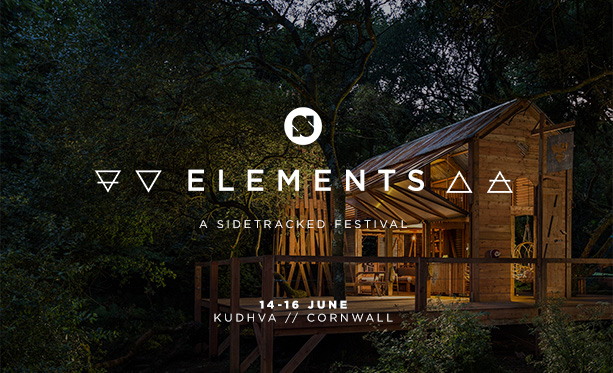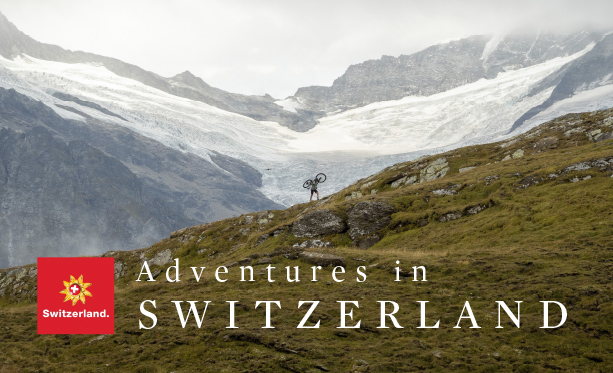10 Years of the Spine Race
Events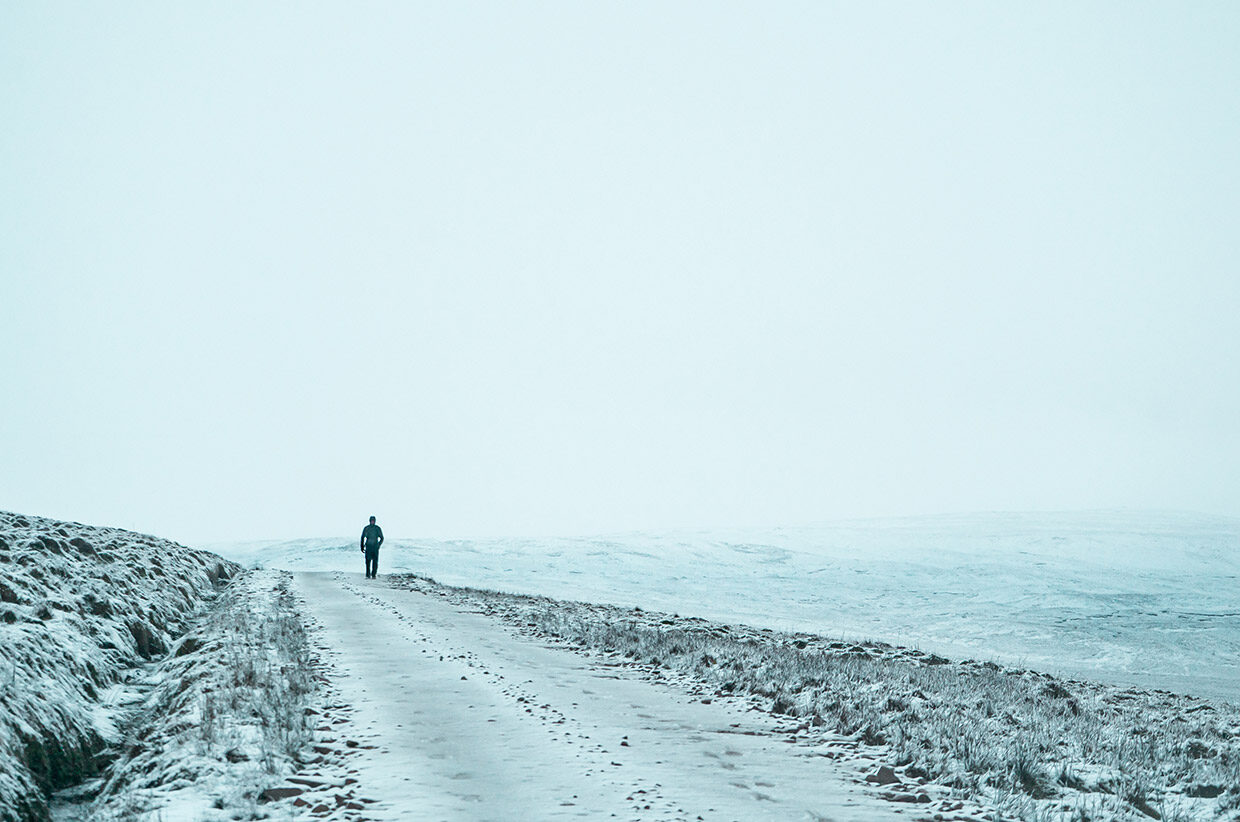 Photo: Will Roberts
Photo: Will Roberts
Matt and Ellie Green of Summit Fever Media reflect on 10 years filming the Montane Spine Race – a brutal multi-day endurance challenge over the Pennine Way in winter.
If you had to make a list of the weather conditions that would make filming difficult, you would encounter each thing on your list every day – if not every hour – on the Pennine Way in winter.
Even getting to locations can become an elaborate problem-solving exercise, with snow, flooding, and jackknifed HGVs blocking the roads. And yet, somehow, in this maelstrom of wintry chaos and sleep deprivation, we would always have a grin on our faces. The Montane Spine Race is simultaneously one of the most challenging but rewarding events we have ever worked on.
The Spine Race? Never heard of it, what is it? Well, it’s a 268-mile non-stop foot race along the Pennine Way, held every year in January. ‘Doesn’t sound too bad,’ say the racing snakes from the Alps. It doesn’t have the jagged knife-edge ridges or the bitter Arctic chill of well-known ultra-races in Europe or Canada. Instead it offers soul-sucking, foot-rotting dampness, with a wind that cuts right through your body, bleak and featureless terrain, and the chance of being alone for the best part of seven days. But delve deeper and there is beauty in that bleakness. It has become a rite of passage with a certain type of runner. Immense feelings of pride mixed with fear are palpable amongst the runners when you stand at that starting line in Edale. But whatever you do, don’t pack a down jacket.
Let’s face it, ultra-distance events of any discipline are not really spectator-friendly sports. Often held in remote places – part of the appeal for many ultrarunners – it just isn’t appealing to hang around being pelted by all the best of British winter just to see a competitor for a couple of seconds. So, our original job at the Montane Spine Race was to bridge that gap: sniff out and follow the stories and experiences of the competitors for the full duration of the race, and to edit that footage down into a five-to-six-minute film to be shown to the outside world at the end of each day.
Other than the occasional help from a camera op on the first day or so it was just me and Ellie, a home-made bed in the boot of our car, a box of snacks, a stove, and our camera kit. Bags filled with clothing for all weathers, multiple shoes – our car was stuffed like a burrito. Over the years we quickly worked out what stuff worked and what didn’t, what was a necessity (rope), what wasn’t (skis).
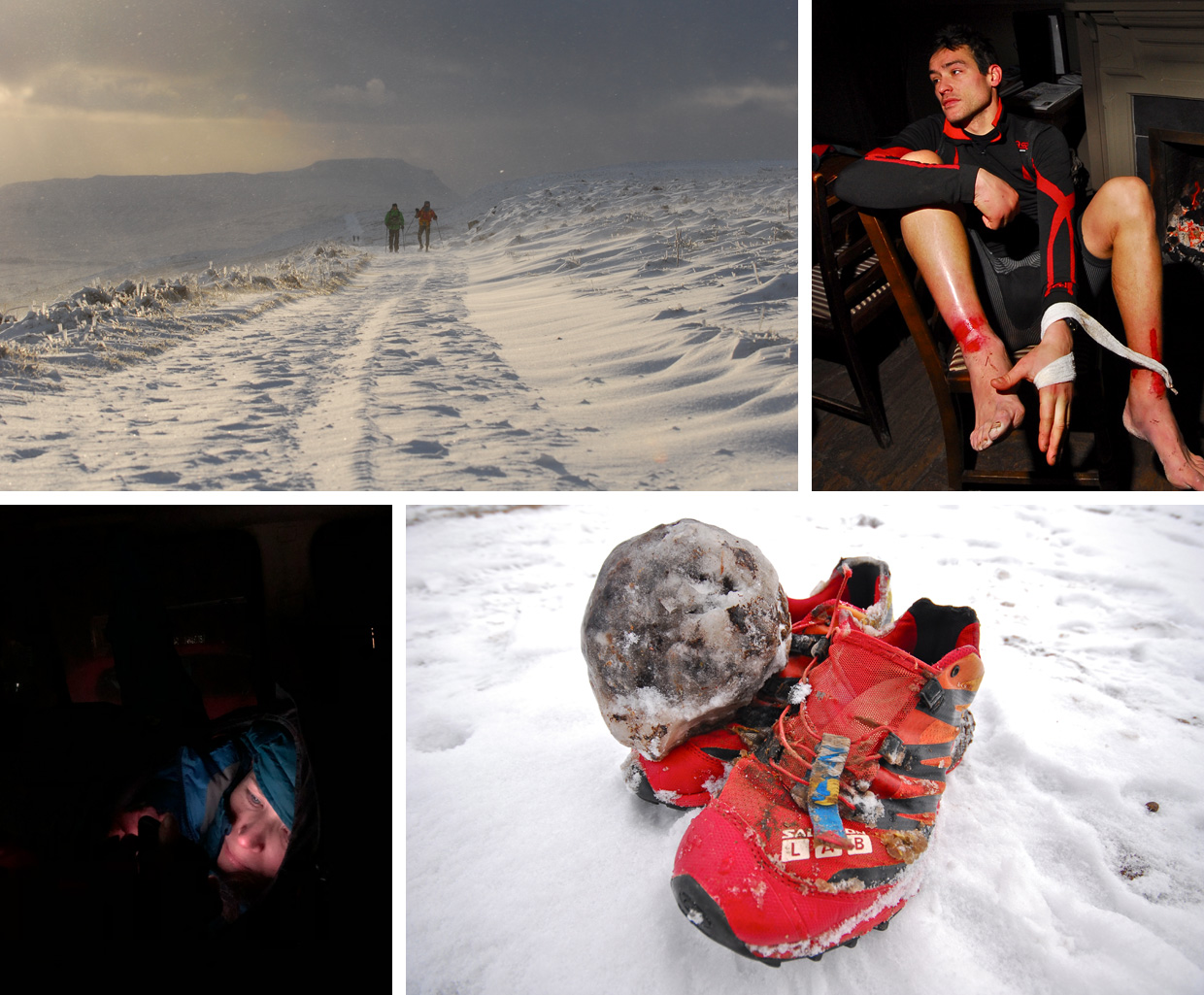
It doesn’t take long, just a few hours from the start, before you start losing all sense of time. Between checking the runners’ trackers and calculating time predictions, getting into location, picking up titbits and rumours of stories to chase, time quickly becomes a blur, and the only chapters in a 24-hour day are sunrise and sunset.
Our typical 24 hours looked a bit like this…
Around midnight, after analysing the trackers of various competitors, we are in position for where we think will be a good start the following morning. After the first few years we got a good idea of where the front runners would be at certain times, and also places where most people would sleep. So, after setting our alarm for 4.00am we would get our heads down. Our theory was that to be safe on the roads we needed at least four hours of sleep a night.
The alarm comes far too soon. Silently, with half-closed eyes, we check the Open Tracking website, and begin a (sometimes heated) debate on where we should start the day’s filming. Occasionally we’ll be lucky and our previous night’s calculations land us in the right place. Other times we might receive a message overnight telling us something exciting is happening elsewhere and we have to hotfoot it to another location.
It’s one of our favourite moments of the day. That peaceful transition between deep night and the slow shift towards dawn is one of those magic times to be awake. It’s a little disorientating, with familiar landscapes merging and distorting in the shadows. You feel adrift in a sleeping world, and there’s an immense and satisfying feeling of being alone.
At the sight of the first runner things then become frantic – which sets the tone for the rest of the day. Sometimes we come across runners collapsed on the ground waiting for mountain rescue, runners sacrificing their races to help others in need, runners with snow blindness, caught in great drifts of snow, dodging mineshafts, sheltering in Greg’s Hut, shuffling through the padded silence of a snow-covered forest, climbing up past the thundering noise of Cauldron Snout, battling the blizzards on Cross Fell, drifting dazed and disoriented over the Cheviots, and near hypothermia taken in by strangers. Every day we are bombarded with a torrent of stories from the race.
At around 2.00pm, Ellie will put down her camera and set up the makeshift editing studio. Often in a moving car, in the dark, Ellie would weave the day’s content with interviews shot at the race start into the daily video. I continue to film until around 5.00pm, feeding Ellie with yet more footage, coffee, and snacks. Throughout the day, our plan of where to go constantly evolves as competitors drop out, go off course, or take the lead.
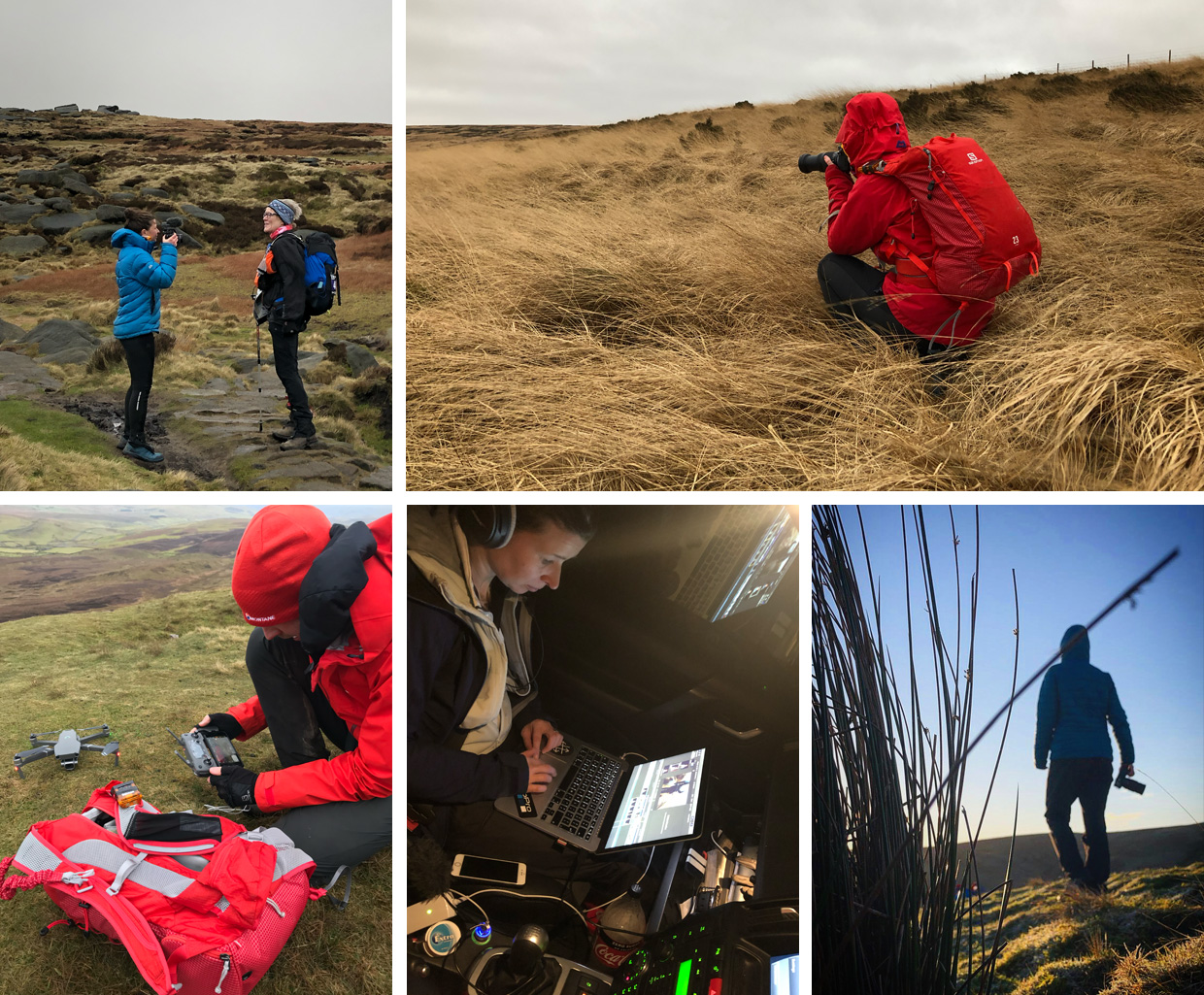
6.00pm is probably the most stressful time, finding a location where we can upload the video. Most of the checkpoints don’t have enough bandwidth. This means checking the current phone signal maps, wedging a phone as far forward on the dash as possible, and driving up and down country lanes and watching the signal bars ping up and down until ‘Stoooooop! We’ve got full 3G!’ (this was in the pre-4G days).
At this time of day, morale is starting to droop for us and maybe for the racers too. The sun has set hours ago and a long night lies ahead. We have a choice: head for competitors probably stuck in a bog in the endless field systems, or follow some poor beleaguered racer struggling through storms on the summits. The idea of getting back out of the car – it’s 9.00pm once full upload has completed – to head back out in the rain to carry on filming for another three hours is not enticing. But once you’re out and you’re chasing the action, the adrenaline carries you along, and before you know it you’re high on a peak sheltering a lens with a sleeve, holding your hood down against the wind, whilst the rain runs down your back and the bogs seep into your shoes. We’re in our element.
We’ve witnessed competitors and volunteers return year after year. Strong bonds are created during race week, and it’s easy to see why. You get sucked into this bubble of camaraderie and an immense feeling of purpose. Whether you are a racer, medic, caterer, race director, videographer, member of the rescue teams, or photographer, all play a part in getting the racers to their end point. And for many the finish at Kirk Yetholm is not just the finish to a race – it’s the culmination of years of training, an achievement they didn’t think they were capable of. It’s intensely emotional being at that finish line.
This incredibly difficult race, in which competitors must put up with mammoth amounts of hardship and problem-solve their way to the finish, has fostered a culture of friendship and support unlike any we’ve seen before.
Taking all the archive footage and building Spine, the 10-year anniversary documentary, was an incredibly difficult process as well as a privilege. The race’s loyal fan base would quite rightly hold us to account if we didn’t do it justice. But the sheer quantity of footage and the range of stories meant difficult decisions for what to include and what to leave out. There were a few tears too, because on a personal level this also marked our last time on the Montane Spine Race after a nine-year stint, and it was with a mixed bag of feelings that the finished edit finally came together. This is something we were going to miss.
We were keen to depict the race as a whole – the competition, the teams, the humour, and the hard work that has evolved over the years into Britain’s most brutal race.
Written and produced by Summit Fever Media // @sfm_films
Matt Green // @mattgreen_sfm
Ellie Green // @elliegreen_sfmedia



